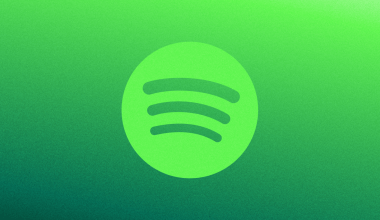You’ve probably heard stories of people making a fortune on YouTube. It might leave you wondering, “How does YouTube money work?” Whether you’re a casual viewer, an aspiring creator, or just curious, this guide will break it all down in simple terms. Let’s dive into how YouTube’s money-making system really works.
The Basics of YouTube Monetization
To make money on YouTube, creators need to join the YouTube Partner Program (YPP). Think of this program as a gateway that unlocks earning opportunities. However, joining YPP isn’t automatic. You must meet a few requirements first:
- 1,000 Subscribers: You need to have at least 1,000 people subscribed to your channel.
- 4,000 Watch Hours: Your videos must accumulate 4,000 hours of watch time in the past 12 months.
- Adherence to Guidelines: Your content must follow YouTube’s community guidelines and copyright rules.
Once you tick these boxes, you can apply for the program. If accepted, you’re on your way to earning money through ads, memberships, and more.
The Role of Ads in YouTube Earnings
One of the primary ways YouTubers earn money is through ads. These are the commercials you see before, during, or after a video. Here’s how it works:
- Advertisers Pay YouTube: Companies pay YouTube to show their ads to viewers.
- Revenue Sharing: YouTube keeps 45% of the ad revenue and gives the remaining 55% to the creator.
But not every ad click or view brings money. The amount a creator earns depends on:
- CPM (Cost Per Mille): This is the amount advertisers pay for 1,000 ad views. It varies based on the video’s niche, target audience, and ad type.
- Viewer Engagement: If viewers skip ads or use ad blockers, it can impact earnings.
Types of YouTube Ads
Understanding the types of ads can help creators strategize their content better. Here are the main types:
- Skippable Ads: These ads play before or during a video, and viewers can skip them after 5 seconds.
- Non-Skippable Ads: Viewers must watch these ads completely. They’re usually 15-20 seconds long.
- Bumper Ads: These are short, 6-second ads that can’t be skipped.
- Overlay Ads: These are semi-transparent ads that appear at the bottom of a video.
- Display Ads: These appear on the sidebar of the YouTube website.
Each type of ad pays differently, with non-skippable and bumper ads typically generating more revenue.
Beyond Ads: Other Ways YouTubers Make Money
Ads aren’t the only way YouTubers earn. In fact, many creators diversify their income streams to maximize earnings. Here are some other popular methods:
1. Channel Memberships
If you’ve ever seen the “Join” button on a YouTube channel, that’s a membership feature. Viewers pay a monthly fee to support their favorite creators and receive perks like exclusive videos, emojis, or shoutouts.
2. Super Chats and Super Stickers
During live streams, viewers can buy Super Chats or Super Stickers to stand out in the chat. This is a great way for fans to support creators directly.
3. Sponsored Content
Brands often collaborate with YouTubers to promote their products or services. For example, a tech YouTuber might review a new gadget, or a beauty creator might showcase a makeup brand.
4. Merchandise Sales
Many creators sell their own merchandise, like T-shirts, mugs, or phone cases, directly through their channel or external platforms.
5. Affiliate Marketing
Affiliate links are another popular way to earn. Creators include links to products in their video descriptions, and they earn a commission for every sale made through those links.
If a viewer has YouTube Premium, they don’t see ads. Instead, YouTube pays creators a share of the Premium subscription fee based on watch time.
Factors That Influence YouTube Earnings
Not all YouTubers make the same amount of money. Here are some factors that can affect earnings:
1. Audience Demographics
The geographic location, age, and interests of a creator’s audience play a big role. Advertisers pay more to target certain demographics.
2. Niche and Content Type
Some niches, like finance or tech, tend to have higher CPMs because advertisers in these fields are willing to pay more.
3. Engagement Levels
High engagement—such as likes, comments, and shares—can boost a video’s visibility, leading to more ad revenue.
4. Consistency
Posting regularly helps maintain and grow an audience, which is essential for steady income.
Challenges of Earning on YouTube
While the potential to make money on YouTube is exciting, it’s not always easy. Here are some common challenges:
- High Competition: Millions of videos are uploaded daily, making it hard to stand out.
- Algorithm Changes: YouTube frequently updates its algorithm, which can impact a channel’s visibility and earnings.
- Ad Revenue Fluctuations: CPM rates can vary widely depending on the time of year and economic conditions.
- Burnout: Creating high-quality content consistently can be demanding.
Tips for Maximizing YouTube Earnings
If you’re an aspiring creator, here are some tips to boost your chances of success:
- Focus on Quality: Invest in good equipment and editing software to produce high-quality videos.
- Know Your Audience: Understand what your viewers want and tailor your content to their interests.
- Optimize for SEO: Use keywords (like “how does YouTube money work”) in your titles, descriptions, and tags to improve discoverability.
- Engage with Viewers: Respond to comments, ask for feedback, and build a community.
- Diversify Income: Don’t rely solely on ads; explore other revenue streams like memberships and sponsorships.
- Stay Consistent: Post regularly to keep your audience engaged and attract new viewers.
Final Thoughts
how does the youtube money work, both creatively and financially, but it requires effort and strategy. Understanding how YouTube money works is the first step to success. Whether you’re planning to start your own channel or just curious about the process, now you have a clear picture of how creators turn their passion into profit.
For further reading, explore these related articles:
- Exploring the Best Free Music Distribution App for Independent Artists
- Comprehensive Breakdown of Music Distribution Costs for Artists
For additional resources on music marketing and distribution, visit Deliver My Tune.






